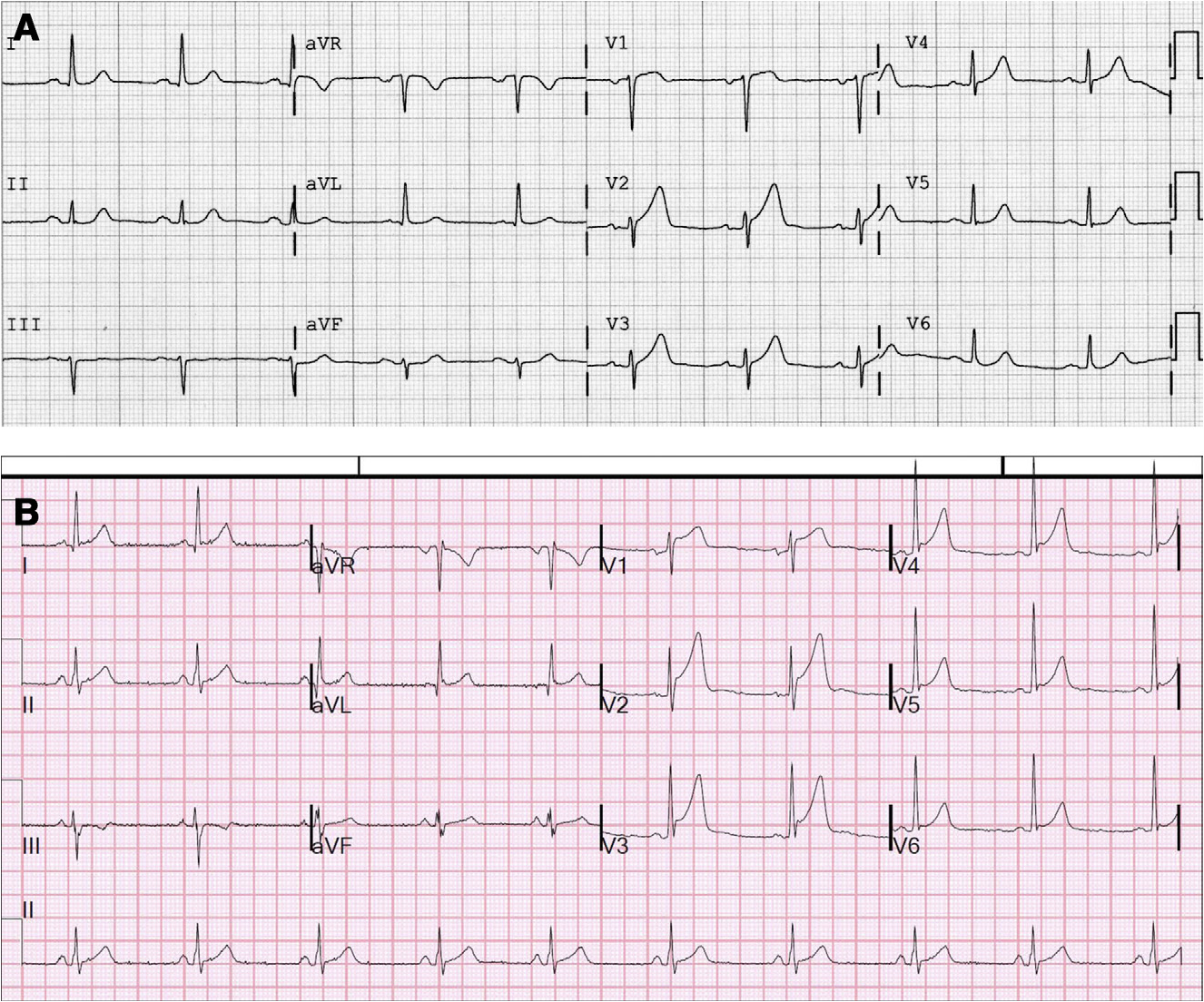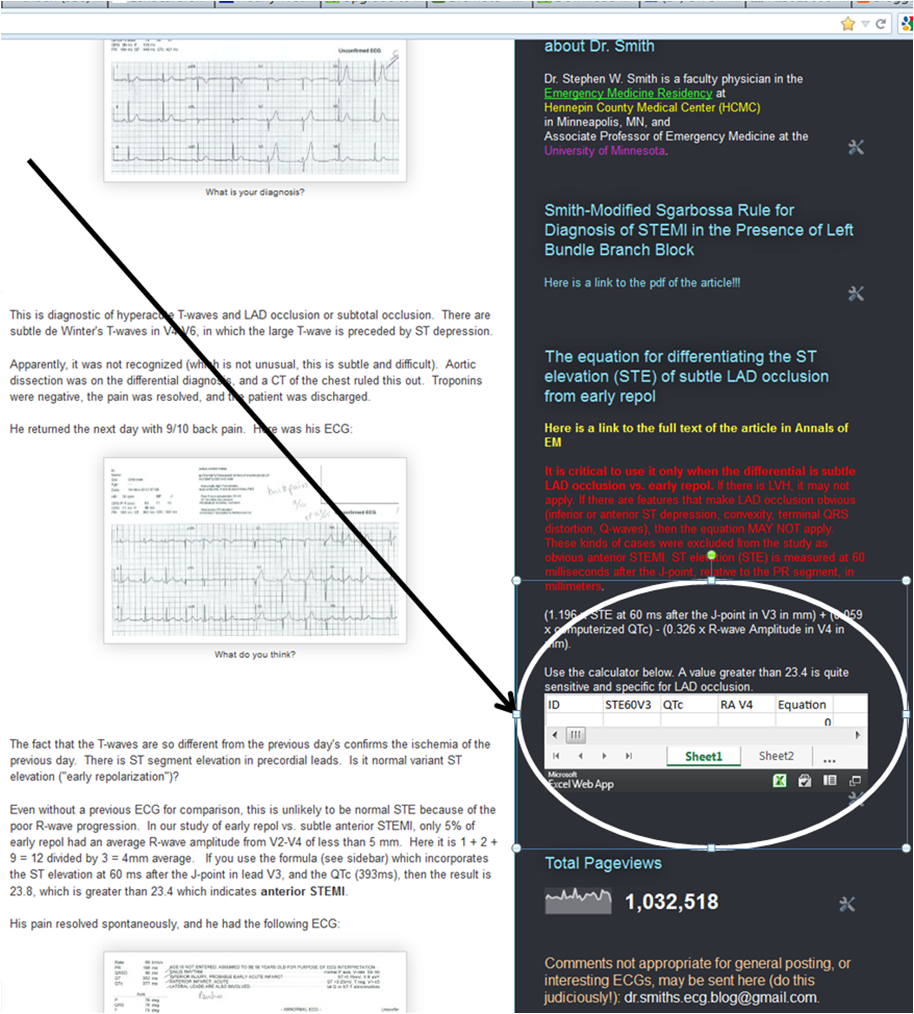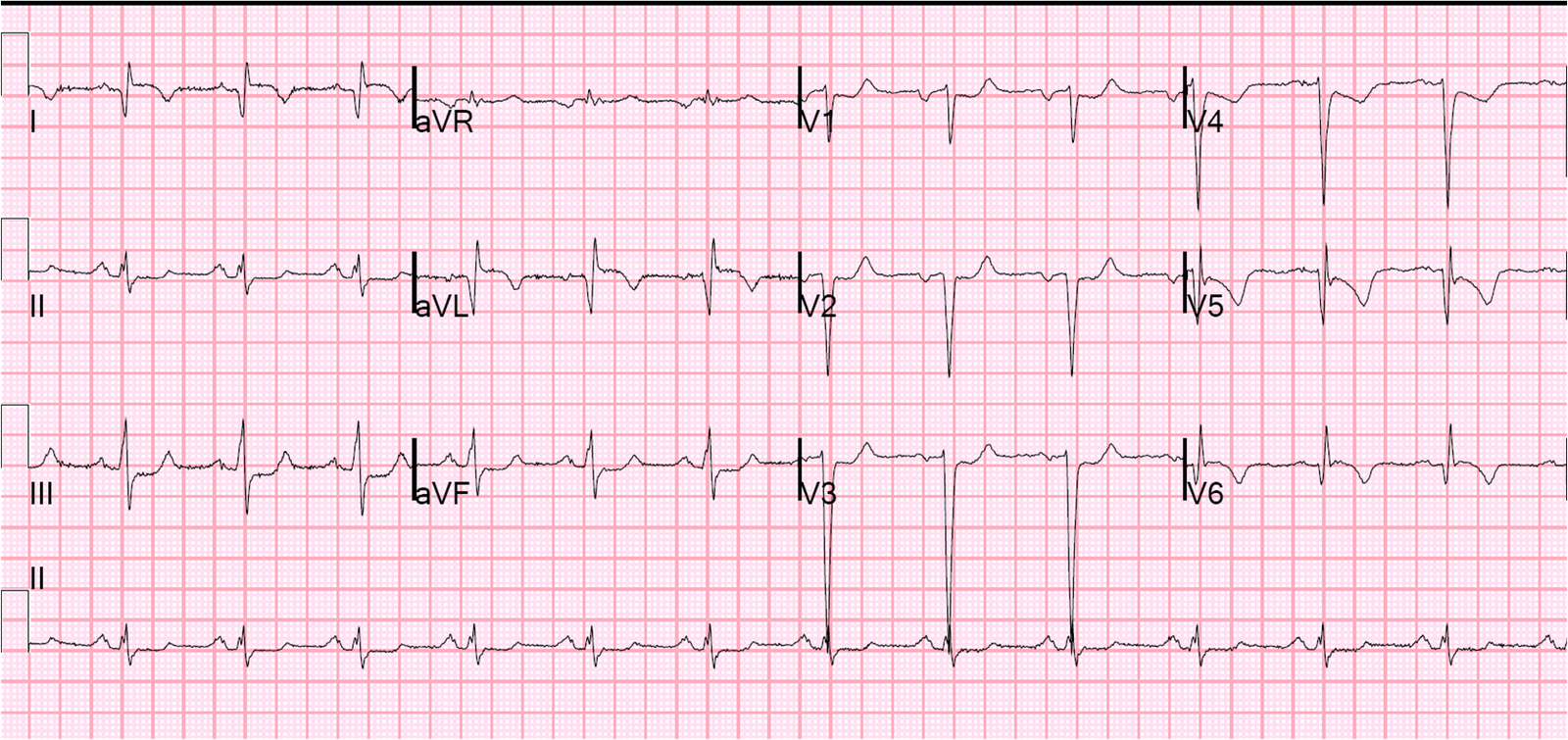Both of these patients presented with chest pain. What do you think of the ECGs?
For the answer, go to the free pdf of this paper I authored in Annals of Emergency Medicine, p. 52 (the 8th page of the paper). There is a full explanation of the formula which helps to differentiate these two entities.
There is an online excel spreadsheet on the right sidebar of the front page of this blog which can be used to calculate the formula value and help you to assess your patient’s ECG.
The picture below shows where to find the online calculator. It is important to read the limitations in red above the calculator:






Dr Smith,
I would have used your formula, but I'm in bed (the clock is 12 AM in Sweden) reading the blog on my iPhone so the use of adequate measuring is limited. Though I would say that ECG 1 probably is a STEMI based on the poor R wave progression (average R wave amplitude in V2-V4 < 5 mm) and perhaps a very subtle J point depression in the inferior leads. ECG 2 looks like early repol with relatively high R waves in the anterior leads, the J point notching (although that finding didn't seem to be of much value in the differentiation according to your study) and absence of reciprocal changes. Though the STE is rather high so I would probably want to use the formula in this case.
Do you use Bazett's formula to calculate QTc?
computerized QTc Bazett. Go to the article for a detailed analysis of the two ECGs!